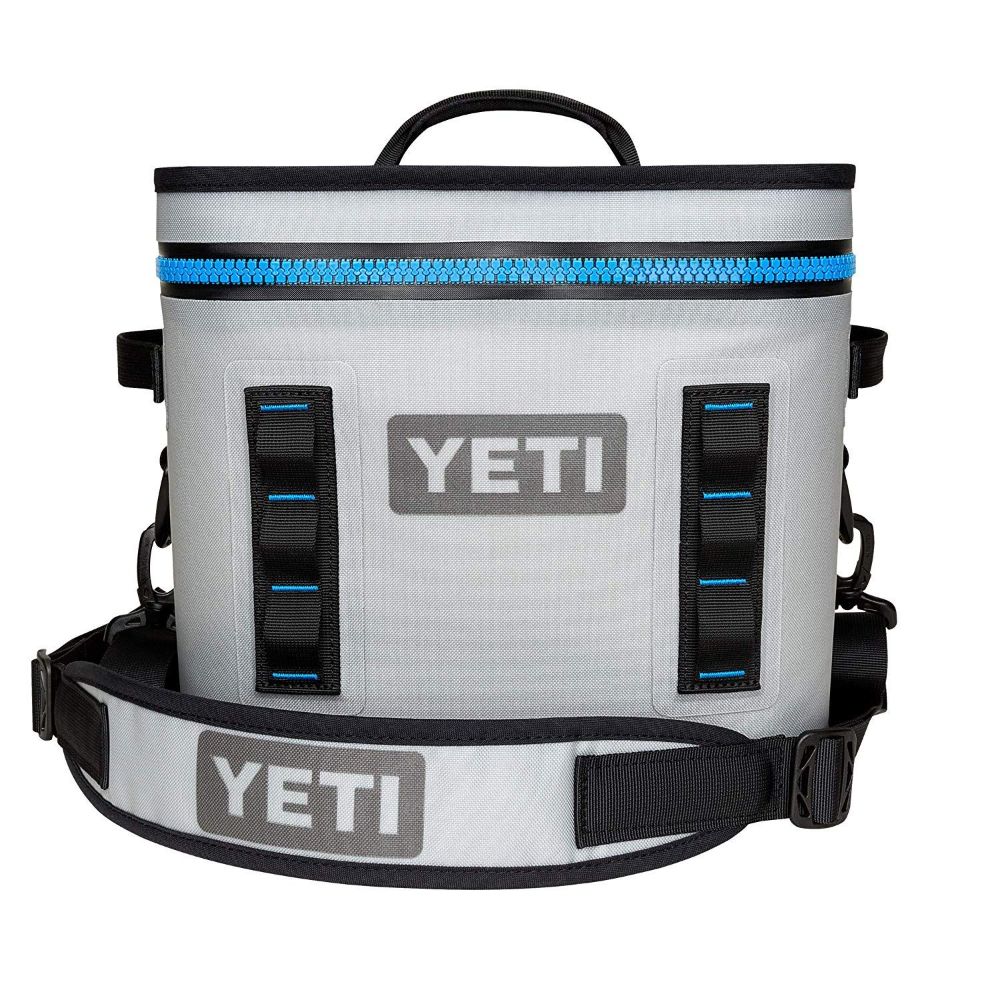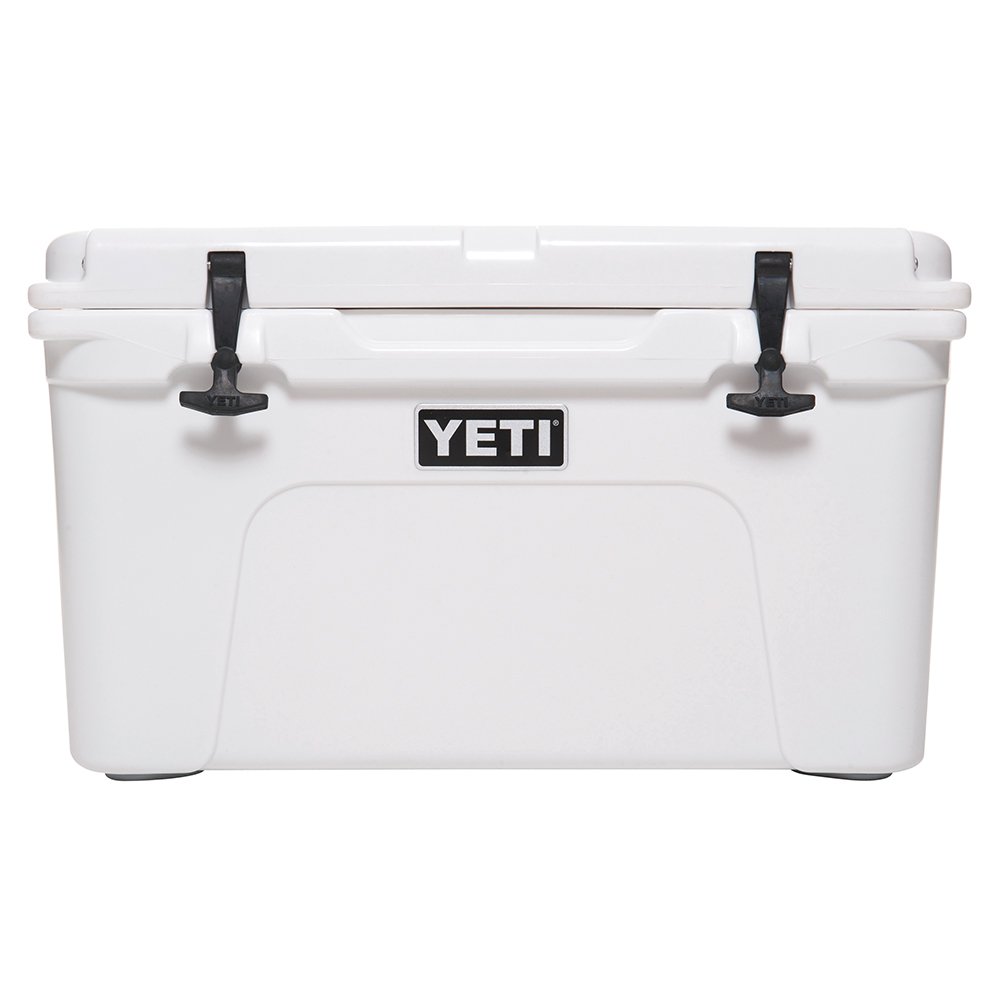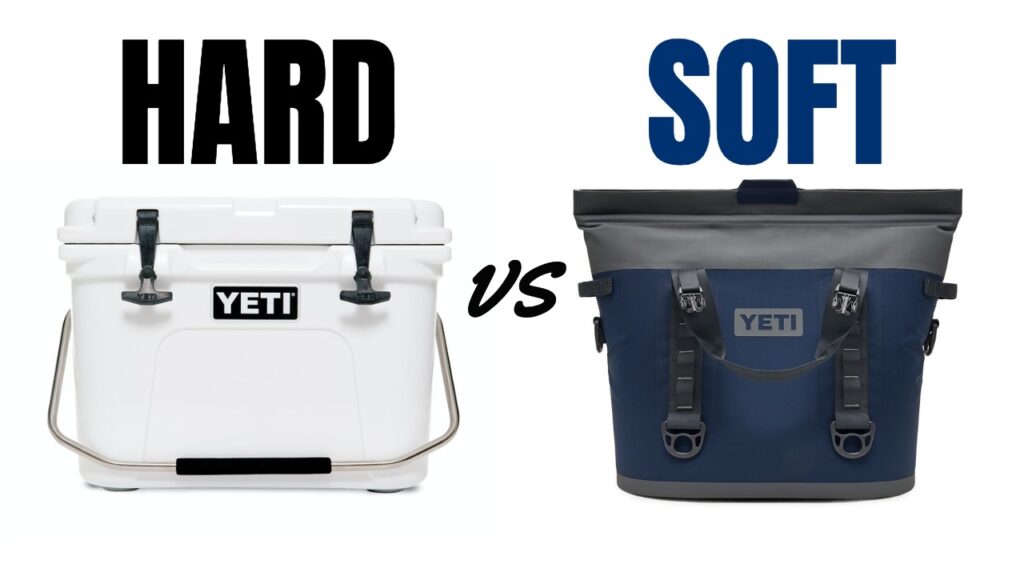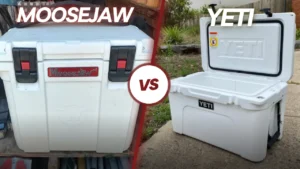Asking if hard sided coolers are better than soft sided coolers is kind of like asking if a tank is better than a car. Sure a tank is more durable and can shoot things, but do you really want to be driving your tank to work each day? Imagine trying to park that thing at the beach!
It’s kind of similar for hard and soft sided coolers…
Hard sided coolers are stronger, more durable and can keep ice longer than soft sided coolers. They also come in larger sizes. But soft sided coolers are lighter and more portable which is better in some case.
In this article we will look at some of the differences between hard and soft sided coolers so you can decide for yourself whether you think a hard sided cooler is better for you needs or if a soft sided cooler would be a better buy.
I’ve also done a full write up on Yeti soft sided coolers vs Yeti hard sided coolers if you’re specifically interested in the Yeti brand.
Durability and Ice Retention vs Portability
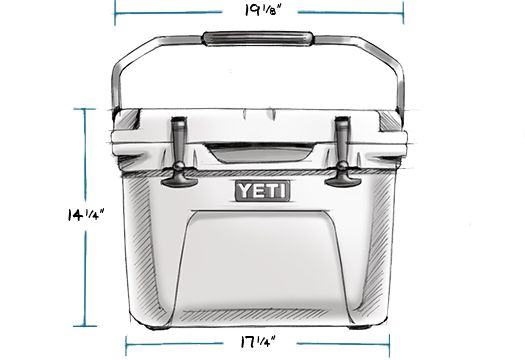
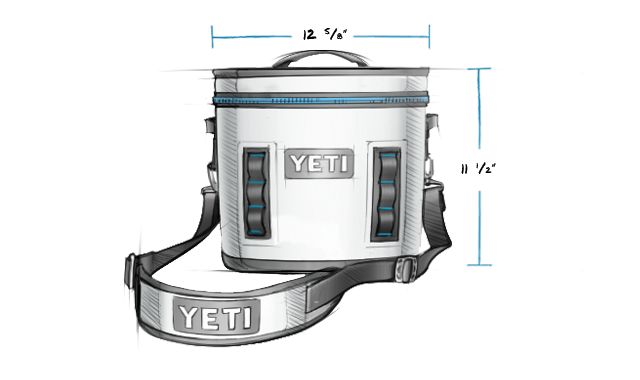
Ultimately this is what it is going to come down to with hard and soft coolers.
One is more durable and keeps ice longer but is heavy and less portable whereas one is light and portable but won’t keep ice as long and isn’t as durable.
There are trade offs to make with both. One type of cooler isn’t “better” than the other, they are just different.
So it’s important to look at which is going to be more valuable to you and choose the cooler that suits your needs.
Comparing The Best To The Best
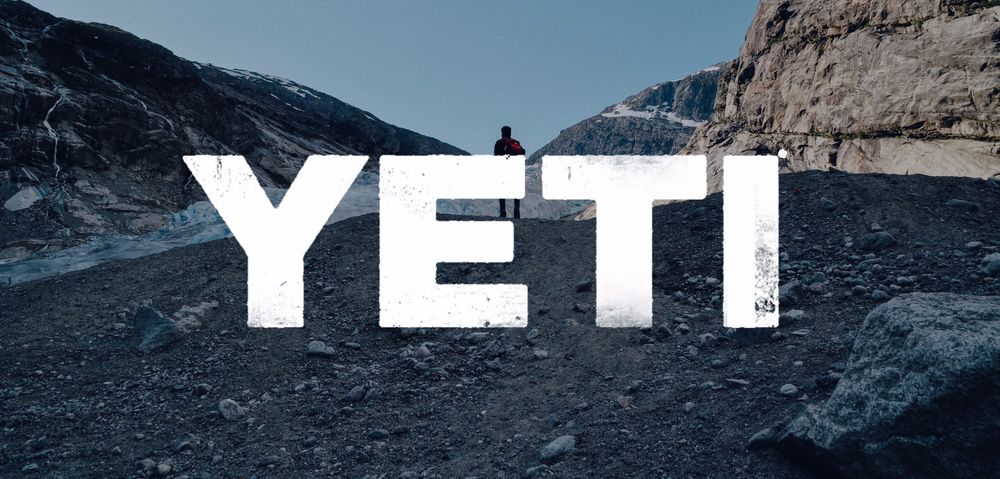
There are different types of hard and soft sided coolers.
For hard sided coolers you have your expensive roto-molded coolers with lots of insulation that can keep ice for a week. Brands like Yeti and Orca and RTIC come to mind.
Or you have your cheap hard sided coolers that keep ice for a day (maybe two) and easily break when they are dropped.
With soft sided coolers you have extensive and over-engineered coolers that are water proof, puncture resistant and can keep ice for 2-3 days. Again brands like Yeti, Pelican and Otterbox make premium soft sided coolers.
Or you have your cheap lunch box cooler or backpack cooler that you can get for $10-$30 on Amazon where it isn’t watertight, the material frays and it is hardly insulated and only keeps ice for a couple of hours.
In this comparison we are going to look at the best of the best. High-quality hard sided coolers vs high-quality soft sided coolers.
A lot of this comparison will travel across to cheaper versions, but to make things simple I’m going to be focusing on the good quality products as that is what I know the most about.
Ice Retention: Hard Sided Coolers Are Better

When it comes to ice retention a good hard sided cooler will beat a good soft sided cooler any day of the week.
Hard sided coolers are made with thick roto-molded plastic, which is itself an insulator, and then they are pressure injected with insulating foam that sets hard. They usually have about 2-3 inches of insulation in the walls and the lid of the cooler.

The lid is also insulated and has a freezer grade gasket to keep out the warm air and hold ice longer.
All of this combines to give good hard sided coolers ice retention of about 3-7 days depending on the brand and the size. Some hard sided coolers can even keep ice upwards of 2 weeks.

Soft sided coolers are made with an strong nylon that is water resistant and scratch/puncture resistant. This doesn’t really add to the insulating ability of the cooler like the roto-molded plastic does.
Soft sided coolers then use a closed cell foam which stays malleable and they usually have about 0.75-1.25 inches of insulation in the walls with 1-2 inches of insulation in the lid.
All of this gives good soft sided coolers ice retention of about 2-3 days. At a stretch and in really good conditions they could keep ice for 4-5 days, but rarely any longer.
As you can see hard sided coolers will keep ice a lot longer than soft sided coolers. This is mainly due to how much more insulation they have.
Hard-Sided Coolers
3-7+ days ice retention
Maximum 14+ days
Soft-Sided Coolers
2-3 days ice retention
Maximum 4-5 days
Portability: Soft Sided Coolers Are Lighter and Easier To Carry
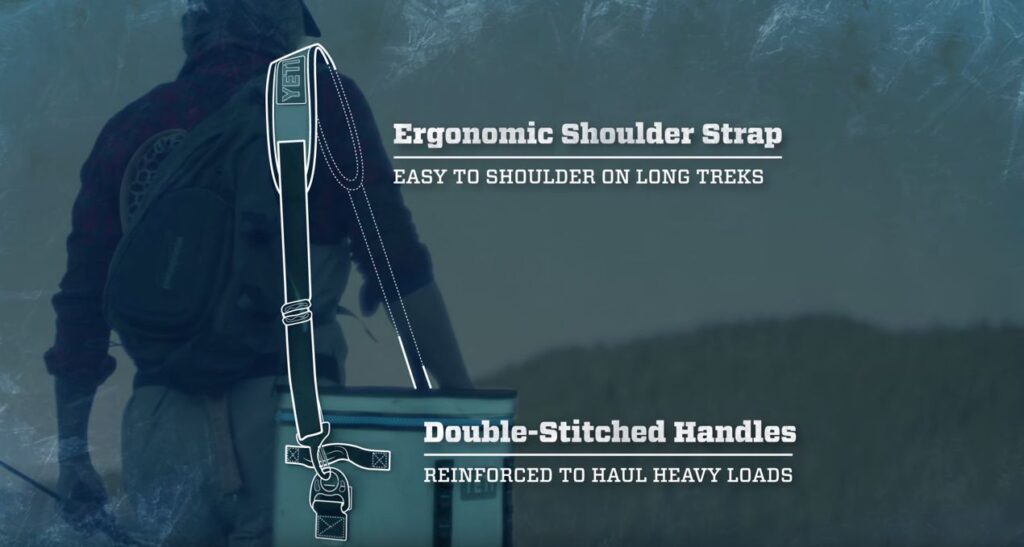
Portability is where soft sided coolers really shine, they are so much lighter and so much more portable than hard sided coolers.
Weight
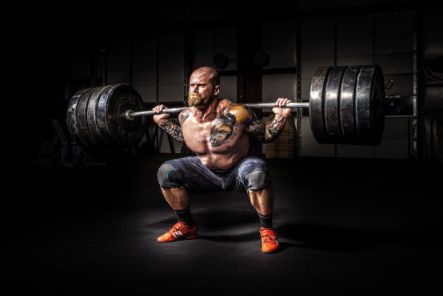
To start with soft sided coolers are much lighter than hard sided coolers, making them easier to carry.
To give a comparison the soft sided Yeti Hopper Flip 18 and the hard sided Yeti Roadie have a similar capacity. But the Hopper Flip weighs 5.1 lbs while the Roadie weighs 15 lbs.
Same with the soft sided Yeti Hopper M30 vs the Yeti Tundra 35 which have a similar capacity of about 30-Quart. The M30 weighs just 7 lbs while the Tundra 35 weighs 20 lbs.
Soft-Sided Coolers
Hopper Flip 18: 5.1 lbs
Hopper M30: 7.0 lbs
Hard-Sided coolers
Roadie 20: 15 lbs
Yeti 35: 20 lbs
Carrying Options
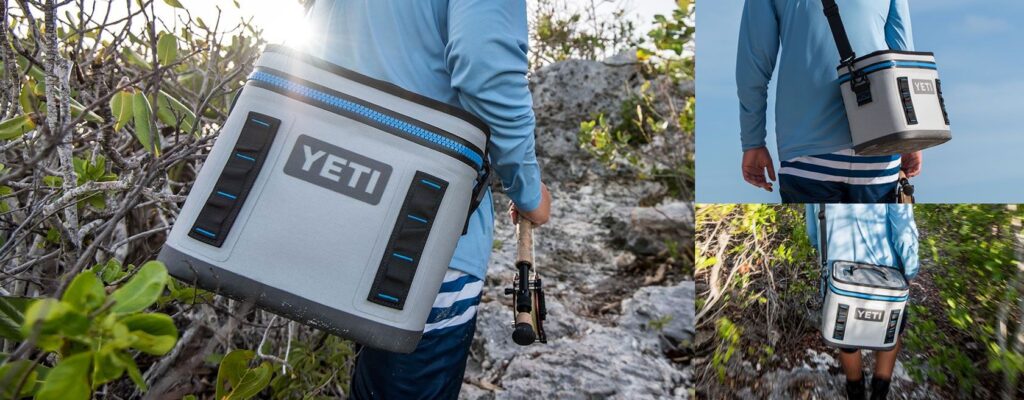
Soft sided coolers tend to have more single hand and hands free carrying options compared to hard sided coolers.
Shoulder straps are very common in a lot of different soft-sided coolers which allows you to carry the cooler without having to hold onto it.
Compare this to most hard sided coolers where you have two side handles and you need to use both hands to carry it.
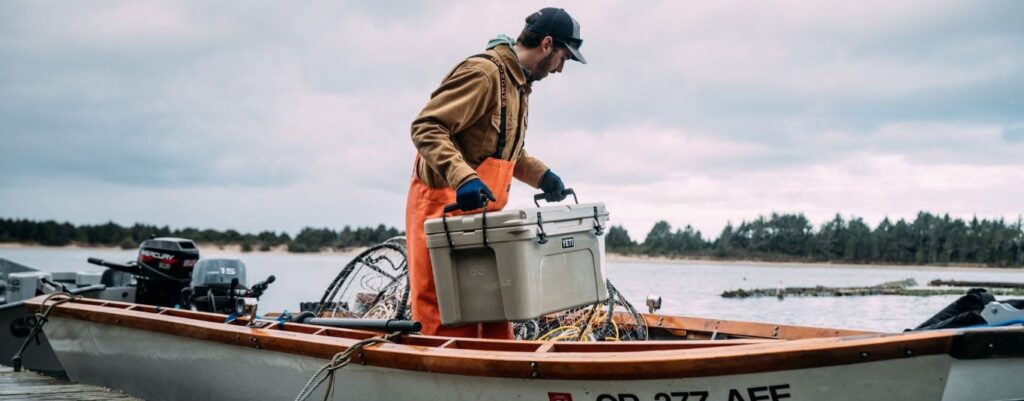
Some soft sided coolers also have backpack straps which make them even more comfortable and convenient to carry.
Soft sided coolers also have a strong material carry handle if you don’t want to use the shoulder strap/backpack straps.
The only hard sided coolers with a single handle tend to be around 20-Quarts or less and have a metal handle that rotates up. Once you get above about 25-Quart they all tend to have dual handles.
Price: Soft Sided Coolers Are More Expensive Per Quart
High-quality soft sided coolers tend to be more expensive per quart capacity when compared to hard sided coolers.
Below you can see a price comparison between the Yeti soft sided coolers and Yeti hard sided coolers.
Soft-Sided Coolers
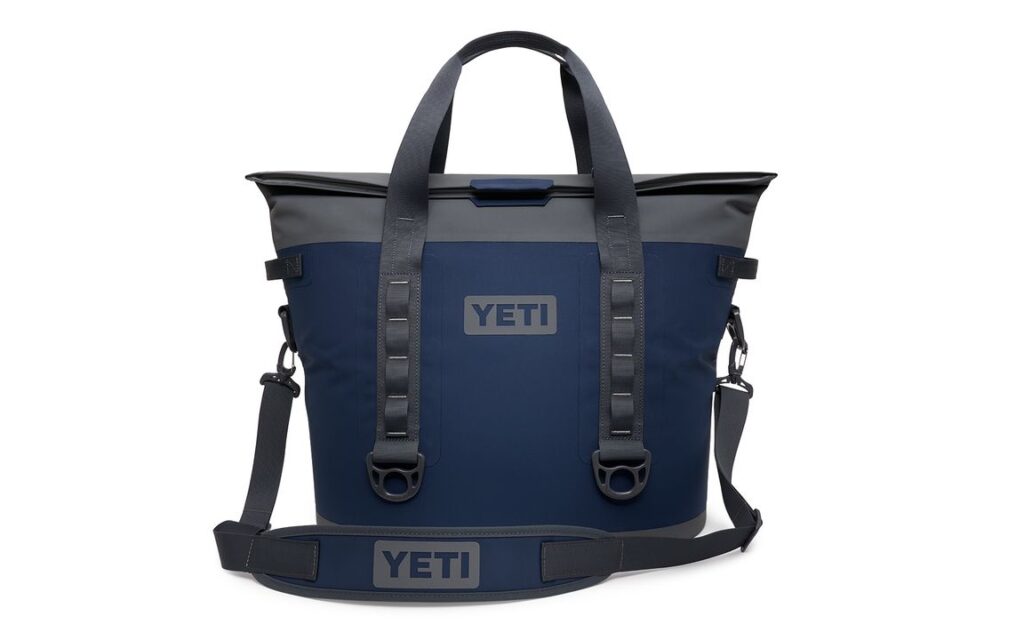
Yeti Hopper Flip 8:
Yeti Hopper Flip 12:
Yeti Hopper Flip 18:
Yeti BackFlip 24:
Yeti Hopper M30:
Hard Sided Coolers
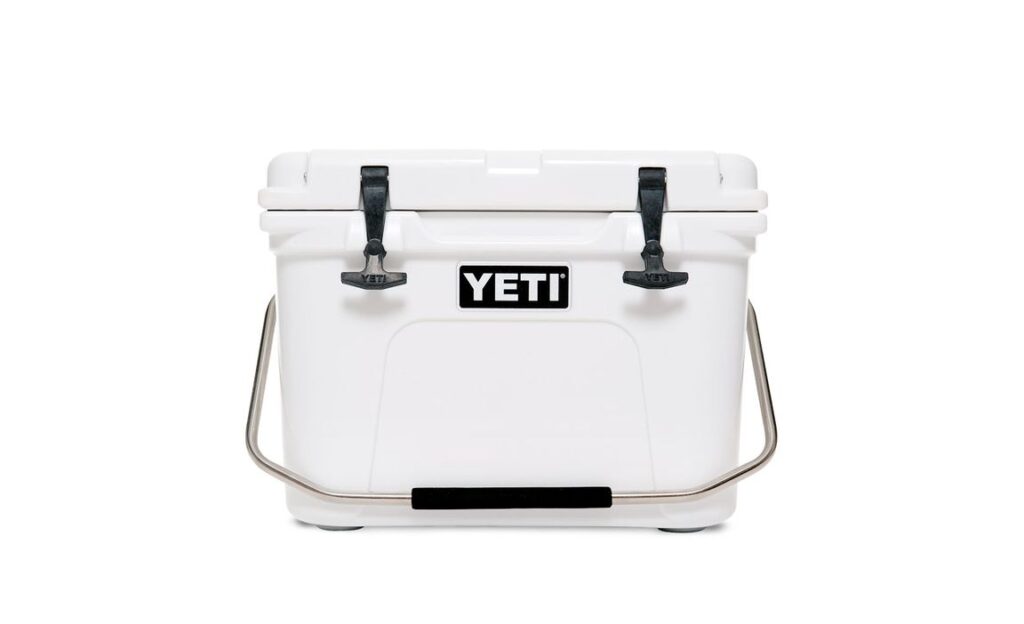
Yeti Roadie:
Yeti Tundra 35:
Yeti Tundra 45:
Yeti Tundra 65:
As you can see the soft sided coolers are more expensive per quart. This is seen pretty obviously with the Hopper Flip 18 which is slightly smaller than the Yeti Roadie but nearly $100 more expensive.
More goes into manufacturing a soft sided cooler and this is likely what gives it the extra cost.
Durability: Hard Sided Coolers Last Longer
If you’re buying good quality cooler then both hard and soft sided coolers are extremely durable. Hard-sided coolers are just more durable.
Hard Sided Coolers – Almost Indestructible
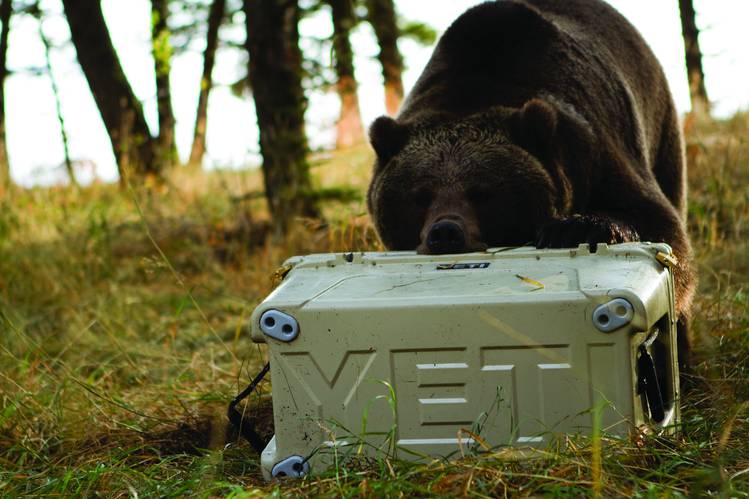
Hard-sided roto-molded coolers are almost indestructible. They are made out of the same material they use to make high-performance kayaks and the outer shell is so tough it’s even bear proof.
I’ve seen people throw these coolers out of planes, off fast moving vehicles and I’ve even seen people drive on them and they still hold up fine.
The video below shows a strong man trying to break a Yeti cooler (without success).
All of this leads to the cooler being able to handle almost anything you throw at it without breaking and also means that it is going to last you years, if not decades.
My Yeti cooler is about 3-4 years old now and it’s still going just as strong as it did the day I bought it.
Yeti hard-sided coolers come with a 5 year warranty and other coolers like Canyon coolers come with a lifetime warranty.
Soft Sided Coolers – Also Tough
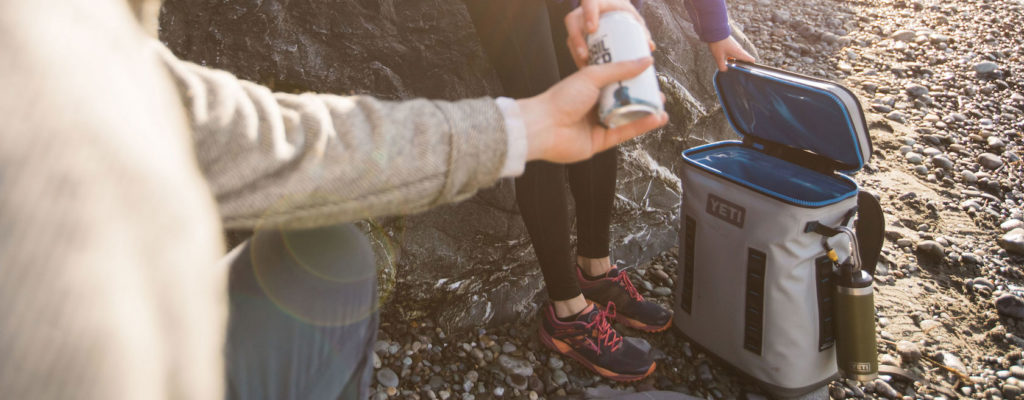
Cheap soft sided coolers aren’t tough. They fray and break easy and leak water.
Good-quality expensive soft sided coolers like the Yeti Hopper Flip coolers on the other hand don’t break easy and are designed to handle the toughest treatment for years.
Yeti soft-sided coolers, as an example, are made with 840-denier nylon that is TPU laminated to make it extra strong and waterproof. They also use RF welding instead of stitching in a lot of places to minimize the chance of tears occurring and to make the cooler stronger overall.
They also have a reinforced base so when you throw the cooler down onto the ground it won’t break, tear or get holes in it.
All of this makes pretty tough coolers that will still last you years, but they still aren’t quite as tough as hard sided coolers.
Most soft sided coolers are back by a 3 year warranty.
Capacity: Soft Sided Coolers are Smaller
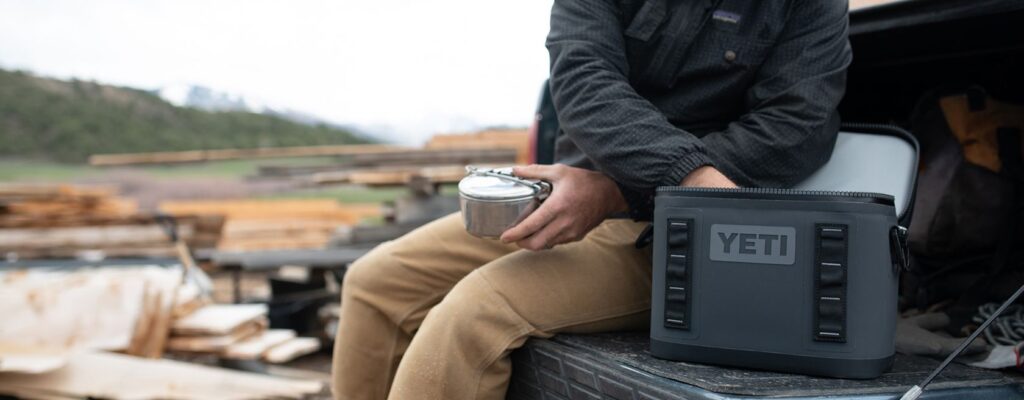
Another thing to consider when choosing a hard sided cooler vs a soft sided cooler is the capacity.
Soft sided coolers are generally smaller than hard sided coolers and range in capacity from just a couple of quarts up to about 30-40 Quarts maximum.
This small size makes them very functional for day trips, taking your lunch to work or smaller getaways and everyday use.
Packing a sandwich and a drink bottle in something like a Yeti 45 is just going to be overkill and so much empty space in the cooler will actually make your items warm up faster than in a smaller cooler.
Hard-sided coolers generally start at about 20-Quart and then go upwards for there with the most popular sizes being under about 65-75 Quart. But you can even get hard sided coolers that are as giant as 400-Quart.
If you want a smaller cooler, a soft sided cooler would be a good option for you. If you want a larger cooler then a hard-sided cooler will likely be your only option.
If you’re looking at soft and hard coolers of the same size check out my article on the Yeti Hopper Flip vs Yeti Roadie to see that kind of comparison.
Longevity and Cleanliness/Mold

When my friend was asking about which cooler to get his brother for his birthday this idea came up and that is how easy it is to keep a hard sided cooler clean vs a soft sided cooler.
Now maybe you’re a clean freak (like my partner is) and you keep your cooler spick and span and dry it out after every use. If you’re like that both coolers will fine.
But if you’re like me and accidentally leave your cooler with some dirty ice water in it out in the rain for 3 months during winter then mold will begin to grow.
With a hard sided cooler cleaning it is quite simple and you can redeem it from it’s moldy winter outside or 2 weeks in the hot garage with some simple wiping and scrubbing.
Soft sided coolers have more creases in them which can collect food and moisture and be hard to dry out and hard to clean if they do get dirty.
Grime can get stuck in the stitching and the fabric can get stained and sometimes there isn’t much you can do about that. There are also the zippers where the zipper teeth can collect grime.
On of the main problems with Yeti soft coolers is that they are actually hard to dry out completely, which can lead to them getting gross over time.
This means hard sided coolers have a longevity to them for people like me who aren’t super clean whereas soft-sided coolers may start to get disgusting after a few years if you don’t actively take care of them.
So Are Hard Sided Coolers Better Than Soft Sided Coolers
The answer is…yes and no
Hard sided coolers perform better than soft sided coolers in terms of ice retention, keeping ice for 3-7+ days. They are also more durable, easier to keep clean and they come in a larger assortment of sizes.
However, while soft cooler don’t keep ice as long they are significantly lighter and much more portable than hard sided coolers. They are still quite durable and can still hold ice for 2-3 days.
So in some ways hard sided coolers are better than soft sided coolers, and in other ways soft sided coolers have it over hard sided coolers.
Ultimately the best type of cooler for you depends on the situation and what you’ll be using the cooler for.
To see the latest prices and details of hard-sided and soft sided coolers click one of my affiliate links below:
